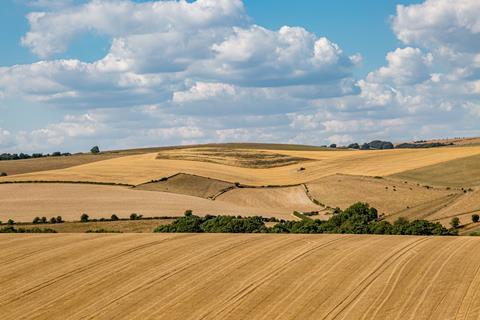Driest start to spring since 1956 has prompted a meeting of the National Drought Group as salad and veg growers face increased irrigation costs
The UK is facing a medium risk of summer drought after the driest start to spring in almost 70 years with growers urged to manage water supplies to help them last.

The Environment Agency, which has issued the warning, convened a meeting of the National Drought Group this week, and has recommended water companies, farmers and consumers take action now to preserve water supplies over summer.
March was the driest in England overall since 1961, while April rainfall was well below average, according to Met Office figures, with the UK receiving just 56 per cent of its typical April total.
Northern Ireland was the exception, recording 114 per cent of its average due to mid-month rain, while northern England was especially dry, with only 25 per cent of its usual rainfall.
“The last two years were some of the wettest on record for England but drier conditions at the start of this year mean a drought is a possibility and we need to be prepared,” said Environment Agency deputy director of water, Richard Thompson.
“The changing climate means we will see more summer droughts in the coming decades.”
At the drought meeting, attendees heard that farmers have had an earlier start to the irrigation season and have seen an increased demand on their on-site storage reservoirs.
Speaking to FPJ about the start of the UK season, communications director at the UK’s largest salad supplier G’s, Anthony Gardiner, said the company has good access to water, but has increased irrigation in recent weeks. Elsewhere in the salad sector, growers are largely positive thanks to high levels of sunshine leading to good growing conditions and strong demand.
The drought group also heard that reservoir storage across England is 84 per cent of total capacity, compared to 90 per cent at the end of April in the 2022 drought year.
River flows are currently below normal or lower for this time of year across northern and central England, while chalk groundwater levels are generally in a good position.
Farmers have been urged to work with the NFU to assess their water needs this summer and take action now to ensure that supplies last.
Speaking to the BBC’s 5Live lunchtime show with Naga Munchetty today (14 May), David Henderson, chief executive of trade body Water UK said: “There’s only so much we can do with the weather. And it is changing so dramatically. We are trying to identify leaks in our network, we have new sensors employed and we’re willing to build up greater resilience by building new reservoirs. We’re trying to build new reservoirs as fast as we possibly can.”
Mixed farmer and pumpkin grower David Phillips, of Clearwell Farm, near Cardiff, told Munchetty that he’d had a stroke of luck with a brief rainstorm last night, which had allowed him to plant new season pumpkins today without irrigation.
“I believe the climate and seasons have become much more erratic during my life. We had to rush out last night and put some herbicide on a field, that wouldn’t have worked without the rainfall,” said Phillips, who said he could fund new on farm reservoirs himself but requires support for planning applications and technical expertise.
Phillips said his farm is largely self-sufficient for water with its own bore hole, but said growers on the east coast require guarantees they will be able to access water before going ahead with new plantings.
April was the sunniest on record for the UK since records began in 1910, with 47 per cent more sunshine than the long-term average, according to provisional Met Office data.
The UK saw an average of 228.9 hours of sunshine during the month, with particularly bright conditions in the Midlands, East Anglia, and parts of Scotland.
UK’s mean temperature for April was 9.6 degrees, making it the third warmest April since records began in 1884, while the highest temperature of the month was 26.7 degrees, recorded on 30 April in Wisley, Surrey.
Ian Lisk, chief meteorologist at the Met Office, said: “Weather typically moves across the UK from west to east, but the north-south amplification of the jet stream has enabled areas of high pressure to hang around in the vicinity of the UK.
“It is a bit unusual for it to have been this persistent, and with the consequences of it bringing the very, very dry spring we’ve had.”
Read a full report on the salad category, from growing conditions to sales trends, in the next issue of FPJ, out at the end of May.



